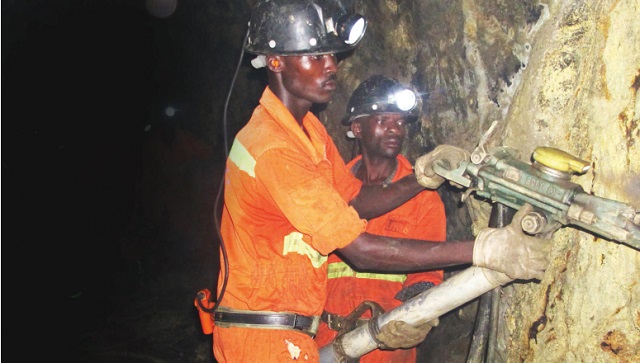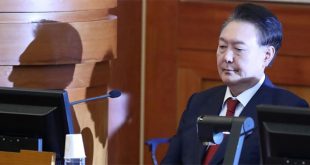
EAC governments advised to take advantage of huge demand for ‘critical minerals’
Kampala, Uganda | RONALD MUSOKE | As demand for the so-called critical minerals which are needed to power renewable energy plants and hi-tech transport systems around the world gathers pace, the big question is whether East Africans can take advantage of it to escape poverty.
The seven East African Community members combined hold considerable deposits of critical minerals which have become essential in the global energy transition. Tanzania, Kenya, Uganda, Rwanda, South Sudan and Burundi hold varying volumes of copper, cobalt, columbite-tantalite (coltan), lithium, among others. Additionally, cobalt and copper reserves in DR Congo are ranked among the largest globally.
Surveys and regional government reports also point to East Africa holding deposits of manganese, tungsten, uranium, tin, lead, rare earth elements, and platinum group of metals, zinc, and graphite among others.
The International Energy Agency (IEA), a global organization that works with governments to shape energy policies for a secure and sustainable future, notes that the demand for critical minerals such as lithium, graphite, and cobalt which are needed to build infrastructure like turbines, solar panels, energy grids, storage and information technology systems, is set to grow by about 500%.
In order to meet the expected rise in global demand, production of these critical minerals will need to increase by nearly 500% by 2050, the IEA notes in one of its policy briefs. Already the price of lithium which is used in electric vehicle batteries has risen by 500% in 2020/21 according to the World Economic Forum.
Although precise data for East Africa is not yet readily available, 30% of the world’s mineral reserves that will be pivotal to further developing green and renewable technologies are in Africa.
However, these resources need to be well managed to avoid unwanted externalities and to guarantee that the benefits accrue to Africans.
Investment in mineral exploration in Africa has been declining in recent years, and reversing this trend hinges on improved geological surveys, robust governance, improved transport infrastructure and minimising environmental and social impacts of mining operations.
“The critical minerals are increasingly becoming part of our energy security. They are used for storage, building grids (copper), IT systems while others are used for building magnets. Our future energy systems need steady supply of these critical minerals,” said Livingstone Ssenyonga, a senior lecturer of Energy Economics at Makerere University Business School (MUBS) in Kampala. He says the clamour for these minerals is set to bring a new set of economics.
“Africa has these minerals; demand and prices are going up; this is an opportunity for Africa (but) organizing the markets for these minerals (restructuring pricing and participation) that work sustainably will be important,” said Ssenyonga.
He added: “The concentration of processing which is at the moment done in three countries; China, Qatar and the U.S, will need to be addressed and harnessing the benefits from these critical minerals will have to be addressed.”
Ssenyonga was speaking on Oct.19 in Kampala at a dialogue organised by Oxfam to increase citizens’ engagement “to ensure that the region’s mineral wealth supports a people-centred and just energy transition in East Africa.”
The dialogue was convened ahead of this year’s UN Climate Conference (COP27) in Egypt and attracted participants from academia and civil society organisations which advocate for good governance of natural resources and energy in Kenya, Tanzania and Uganda.
Ssenyonga noted that the current mining policies and laws across East Africa are not explicit on critical minerals despite their importance in the global energy transition.
Siraje Magara, the extractives industries coordinator at Oxfam-Uganda said the scramble and partition of the continent for the critical minerals is just beginning; yet, even with the recent passing of the Mining and Minerals Act (Uganda), one cannot see any strategic intent from the government to protect and hold onto these minerals.
“We have these minerals but which ones could help propel our country forward? These are finite resources and if these critical minerals are indeed critical, what is it that we are doing to strategize and ensure that we benefit from them.”
In his paper, `Towards a People-Centred and Just Energy Transition for East Africa,’ Ssenyonga, noted that countries have committed to reduce global carbon emissions and committed to have net-zero carbon emissions by 2050.
He said ensuring justice and fairness is important for losers in the energy transition to be compensated and that adequate policies and strategies with cooperation, trust, a strong commitment by member countries in a socially and environmentally friendly manner will also be crucial.
At the meeting, Peter Lokeris, the state minister for Mineral Development said the shift to cleaner energy resources has increased demand for critical minerals because a typical electric vehicle, for example, will need six times more minerals than a conventional car while an onshore wind plant will need nine times more minerals than a gas-fired plant.
Lokeris said the government has come up with a “minerals development programme” to exploit and add value to the critical minerals within Uganda which are still largely unexplored.
He said the government is establishing the country’s reserves of critical minerals, connecting the mineral rich areas to key infrastructure such as electricity, water, roads and railways, and promoting linkages with other industries to create value and jobs within the country.
Eng. Vincent Kedi, the Commissioner in charge of Licensing at the Directorate of Geological Survey and Mines told the meeting that the East African region and even the entire continent needs a regional or continental policy on critical minerals.
“We should have blanket policies to say we are not exporting raw minerals; we are going to add value within the continent. This brings us to having joint collaboration,” he said.
George Odongo, a Ugandan MP in the East African Legislative Assembly (EALA) appeared to agree with Kedi, the commissioner, noting that within the East African Community Vision 2050, there is need for harmonization of policies.
“We see that individual states have specific policies geared towards their strategic plans and mineral resources development but I think as a region, we need to pull in the same direction, and pool our resources together so that we harness the energy transition as a region,” he said.
According to Francis Odokorach, the Oxfam Country Director for Uganda, the imminent shift to a clean energy system will position the energy sector as a major force in the mineral markets.
Lynn Gitu, the Programme Leader at Impact, a regional NGO that has been working over the last 30 years to improve the management of natural resources in communities where security and human rights are compromised told the meeting that the East African Community is the fastest growing bloc on the continent with a growth rate of 7.1% and it is also considered the most integrated on the continent. Gitu, however, noted that the region still grapples with governance challenges, which to her is one of the most critical challenges in the energy transition debate.
“There is a real opportunity for a people centred energy transition if we do things right from the beginning,” she said.
In the same meeting, a Kenyan activist said regional governments “need to move with real speed because the rush (for the critical minerals) is real and lessons must be learnt from previous experiences.”
“Are the proposals around the energy transition going to further disadvantage the rural people who already don’t have access to cleaner energy? How do we make sure that the poorest of the people at the grassroots are able to access and afford modern clean energy in a sustainable manner, otherwise, we will be leaving behind a significant number of people,” she said.
‘We need just energy transition’
According to the IEA, Africa’s energy transformation can only succeed if it has the support of the general population. “People must be at the centre of Africa’s energy transition and developing home-grown energy industries can reduce imports, create jobs and build a local capital base,” the IEA notes in one of its recent blog posts.
Environmental activists argue that it is probably one of the “world’s greatest injustices” that Africa is perhaps the only region in the world that is mostly exposed to climate disruptions—ranging from severe droughts to destructive flooding yet its people have contributed the least to energy related greenhouse gas emissions (only 3%).
By the end of 2022, about 600 million Africans lacked access to electricity, which is 43% of the continental population and 4% more people than in 2019. In addition, around 900 million lack access to clean cooking facilities.
Uganda is also amongst Africa’s top 20 energy access deficit countries, with 26 million people not having access to electricity as of 2019. These figures have no parallel in any other region of the world, where near-full access has been achieved.
The distribution of energy poverty also shows that there are more deprivations in rural areas and among the female-headed households as compared to male headed households. Deliberate efforts are required to ensure clean and affordable energy access to all African people and the world.
However, according to the International Energy Agency’s Africa Energy Outlook 2022, the global clean energy transition holds great promise for the continent’s economic and social development. The IEA is particularly confident about African countries capturing the technology spill-overs of these changes.
Experts in renewable energy say transitioning to a low-carbon economy is key to tackling climate change challenges as stipulated in the United Nations Development Goal 13 and the 2015 Paris Agreement. Goal 7 of the UN SDGs also emphasizes affordable access to modern energy.
For Joseph Kibugu, the Africa Regional Manager at Business and Human Rights Resource Centre in Nairobi, the companies that are leading the work for renewable energies this time should be keen on human rights standards in land acquisition, labour rights, and employment of children.
“The model needs to change from the current centralized one to a more democratic model,” he said, adding that, “The days of power lines cutting through people’s land yet these people are living in the dark even when the energy projects are in their midst should change.”
“There is need for communities to be co-owners of these projects such that projects on one hand compensate the people for the loss of their land and livelihood but also give them shares in these projects; this would help to increase the social license of these projects.” “We want to avoid a situation where corporations monopolise these projects,” Kibugu said.
****
 The Independent Uganda: You get the Truth we Pay the Price
The Independent Uganda: You get the Truth we Pay the Price



